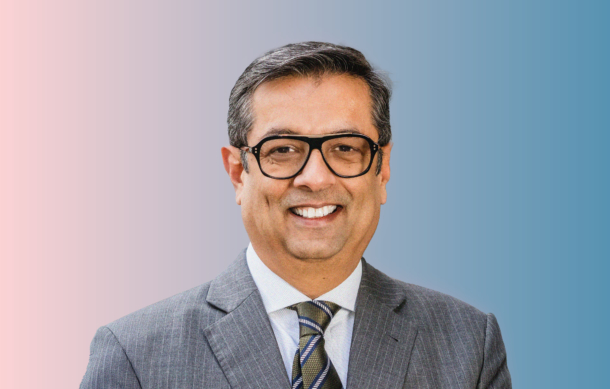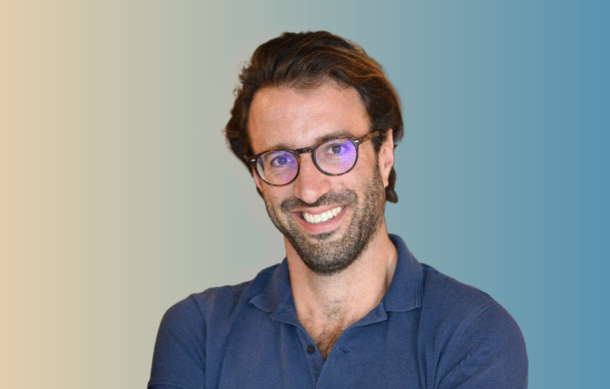
In this roundtable, three pharma marketing leaders share what’s really working – and what isn’t – for HCPs in 2025. Discover practical strategies for improving impact, from AI-driven workflows to bite-sized content
Interview by Isabel O’Brien
Contributors:
- Julia Strandberg, Chief Business Leader Connected Care, Philips
- Yacin Marzouki, Global Omnichannel Engagement Lead
- Catarina Sobral, Head of Business Operations, Sandoz
What’s something new that’s made engaging HCPs harder this year, and how are you addressing it?
Strandberg:
Despite the availability of new technologies, clinicians continue to struggle with information overload and other challenges that consume their time and attention. 77% of healthcare providers, including those in Europe, recently reported that they have lost clinical time due to incomplete or inaccessible patient data, with over a third losing more than 45 minutes per shift. As a result, patient care is being directly impacted, with 1 in 5 clinicians spending less time with patients.
We know HCPs are busy and overwhelmed, so our approach is to meet them where they are and provide tailored solutions that give them back time to focus on patients. To do this, we leverage multiple platforms to obtain timely feedback – from social listening to peer conversations at industry events and KOL engagement. This enables us to better understand how we can offer solutions and services that address clinical or operational challenges.
Marzouki:
The pressure on reps and MSLs is increasing, which makes engagement harder. Their role is evolving, and so is the audience, with more millennial and Gen Z HCPs coming through the ranks. At the same time, HCPs themselves are under more pressure than ever due to funding challenges, patient expectations and reimbursement criteria.
I won’t claim we have a magical solution, but we do try to make every single touchpoint a value add for both reps and HCPs. Locally, that means really co-creating content with reps. However, most global content still gets created without their involvement, which can lead to frustration.
Sobral:
The biggest challenge is breaking through an increasingly crowded environment where HCPs face constant information overload. Our approach has been to keep engagement sharp, relevant and easy-to-digest – making our brand stand out by connecting clinical value with practical tools HCPs can use straight away.
We’ve also broadened our touchpoints, from supporting prescribers with clear pathways to engaging pharmacists as trusted partners in patient care. The evolving substitution policies in Europe mean we need to go beyond price alone, ensuring our brand continues to be recognised for quality, reliability and the added value we bring to HCPs and the wider health system.
Simplicity – not complexity – is what cuts through the noise and drives engagement
Is there a gap between what HCPs say they want, and what actually grabs their attention?
Strandberg:
Yes, there’s often a gap. Clinicians may say they want feature-rich solutions, but those can add unnecessary complexity. What really captures their attention are simplified tools that reduce cognitive burden and make their workflows easier.
The Visual Patient Avatar (VPA) is a good example. Rather than displaying anatomically correct patients, it translates vital signs into simple visuals using colour, shape and movement. In studies at Swiss teaching hospitals, anaesthesiologists recalled critical information in three seconds with VPA compared to ten with traditional monitors – and 73% of vital sign data was identified correctly on first use. Even a few seconds’ difference can impact patient outcomes.
It’s a reminder that simplicity – not complexity – is what cuts through the noise and drives engagement.
Marzouki:
Yes, and I’m a big believer in not listening to exactly what customers want. If you’d asked people before the invention of the car what they wanted, they’d have said “faster horses”. In 2021, we wouldn’t have asked for generative AI, just a better Google.
In the same way, we hear more and more that HCPs don’t want product information. I don’t think that’s true. They do want it – just not plain, old presentations full of endless positive data charts. HCPs want to be empowered to make the most informed prescribing decision possible. That means giving them product information delivered in a way that matches their “TikTok, YouTube, LinkedIn brains”. We’re not used to sitting through boring content anymore, so why should HCPs?
Beyond that, our communication is still too transactional. We expect something from HCPs rather than building relationships, even in digital channels.
Sobral:
HCPs often ask for deep clinical evidence, but in practice they respond best to content that’s quick, visual and actionable. Decision aids, infographics and checklists generate higher engagement because they make our brand relevant to their day-to-day reality. What really resonates is when we show how our solutions not only deliver for patients but also support more sustainable healthcare systems.
What’s one initiative you’ve tried recently that really worked with HCPs, and why do you think it clicked?
Strandberg:
A key area of interest has been our integration of AI into clinical workflows. Rather than leveraging AI as a standalone tool, we embed it across our portfolio to support real-time decision-making, reduce administrative burden and improve care coordination. These AI-powered solutions help address everyday clinical challenges by generating insights when and where they’re needed and streamlining tasks to give clinicians more time with patients.
By connecting AI capabilities across care settings, we enable a more seamless, efficient experience that aligns with what clinicians want and need in their daily roles.
Marzouki:
Fast-paced, highly engaging videos. They work because they feel like the content HCPs already see on their favourite platforms. No more HCPs filmed in front of a bookcase in a dark room – instead, YouTube or TikTok-level quality. Then the editing can then be adjusted for each audience: more authentic for Gen Z, or faster-paced for millennials.
Sobral:
Our short, peer-led congress highlight videos have really cut through (especially if they are bite-sized). By designing content that mirrors how HCPs consume information today, we’ve extended our brand presence far beyond the congress floor. Co-creating initiatives such as patient education and practical guidance has also worked well, because HCPs see us as not just supplying medicines but as a partner committed to improving care and enabling more sustainable health systems.
HCPs want product information delivered in a way that matches their ‘TikTok, YouTube, LinkedIn brains
If you had to prove to your leadership team that your brand messaging activities are working, what’s the one metric you’d show, and why?
Strandberg:
If we were to highlight a single metric, it would be the depth of engagement among qualified HCPs. This goes beyond simple reach, focusing on sustained, multi-touch interactions with strategically important decision-makers over time. “Qualified” HCPs are those who match our audience profile and have engaged in multiple ways – attending a customer summit, participating in webinars, downloading resources, or joining focus groups.
Measuring engagement depth shows whether thought leadership builds trust and credibility, rather than generating fleeting interest. For leadership, this metric is particularly compelling because it links marketing activity to the strength of relationships and serves as an indicator for future opportunities in a complex, long sales cycle. It also provides insight into both the number of HCPs reached and the quality of engagement.
Marzouki:
Message recall – both prompted and unprompted. That’s what we can actually control. Prescribing or product use is a consequence of the HCP remembering and understanding what we told them. After that, it’s up to them to make the most informed prescribing decision possible.
Sobral:
For us, the strongest measure is the quality and depth of engagement we’re building with HCPs. Access (volume, duration, quality of interaction) with various HCP groups remains the most important metric at Sandoz. We then support this with other key data, such as engagement rates on digital content (click-through rates as direct measure of relevance) and qualitative feedback on how messaging supports clinical decision-making and aligns with evolving care priorities.
Decision aids, infographics and checklists generate higher engagement because they make our brand relevant to HCPs’ day-to-day reality








